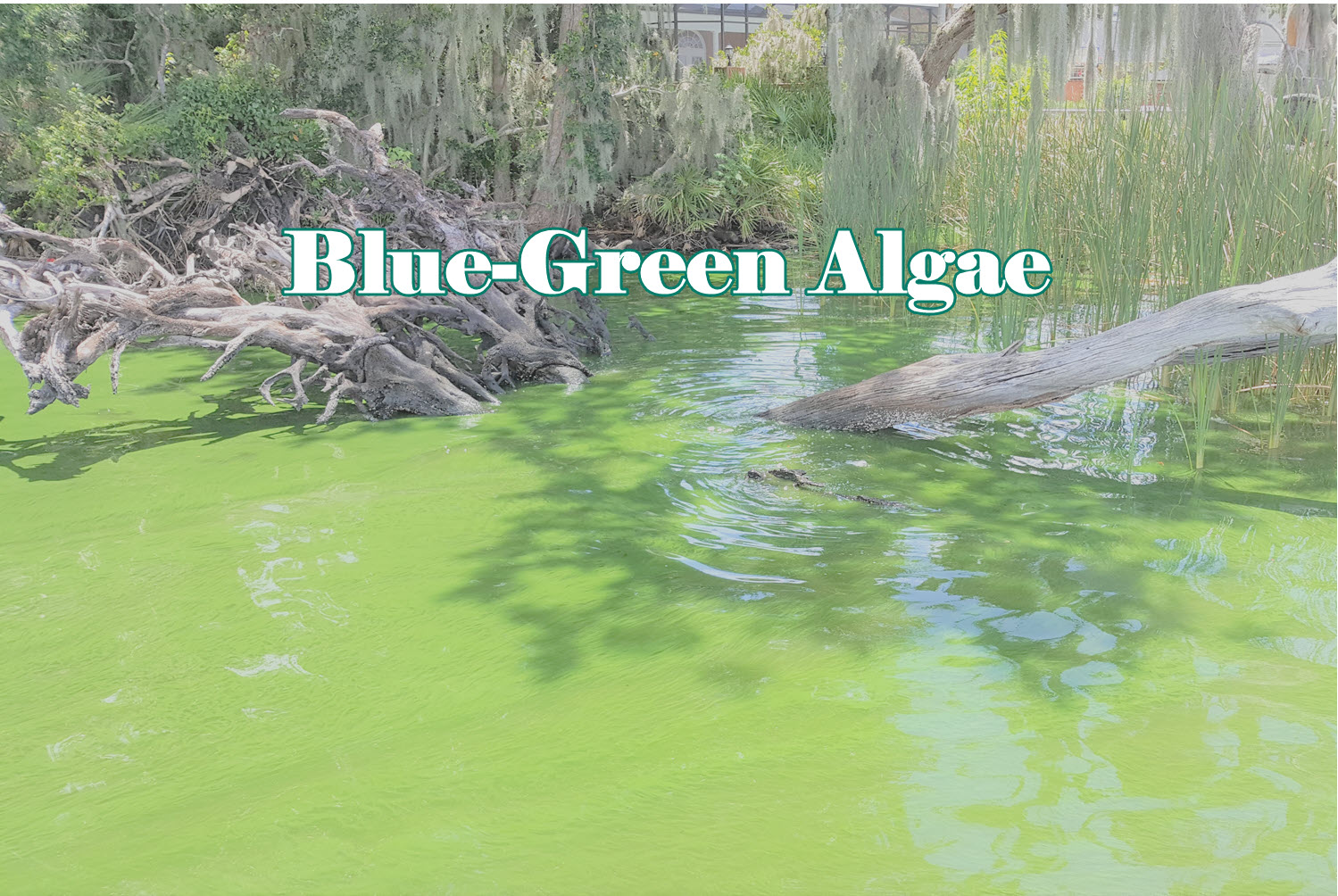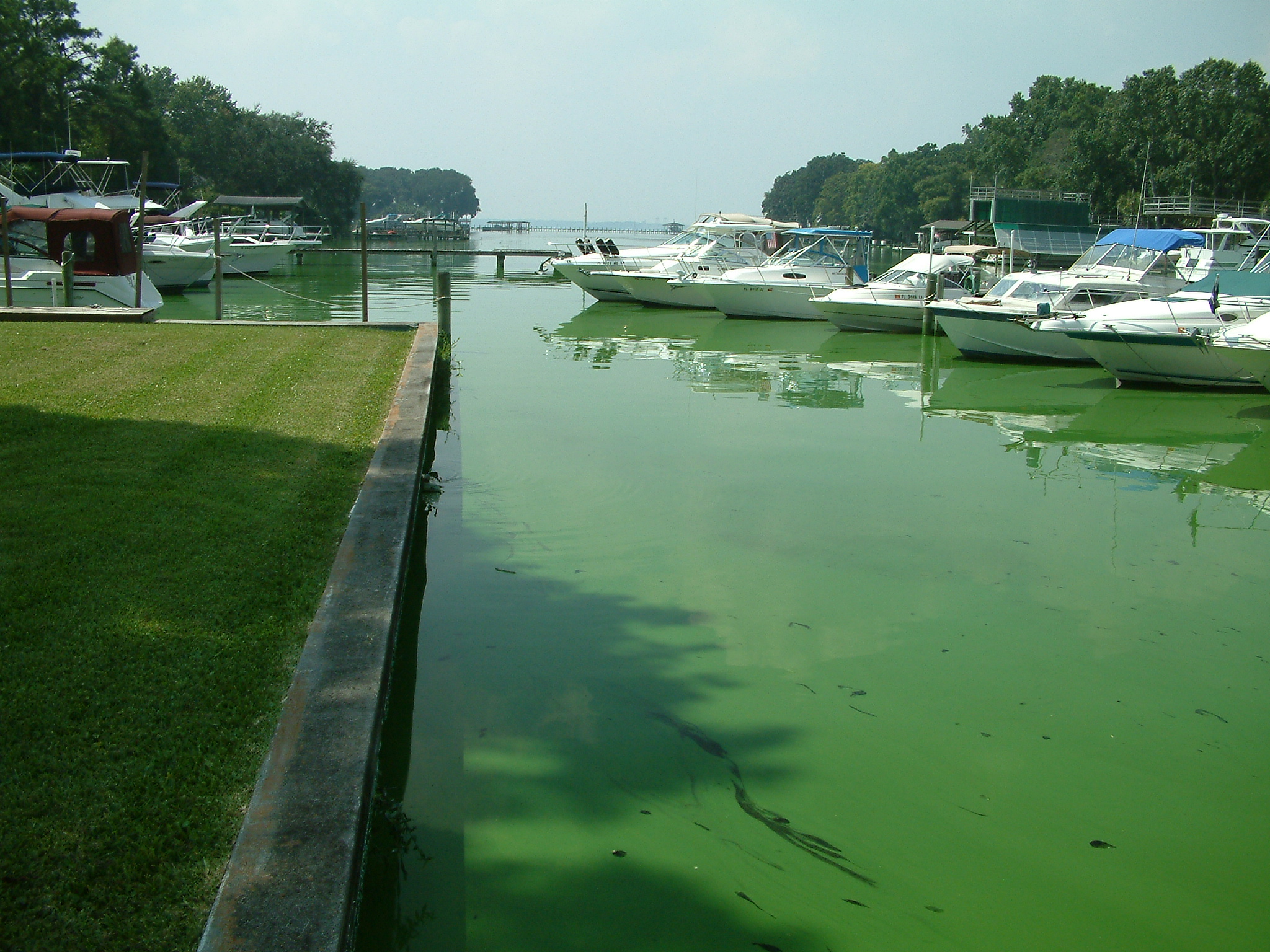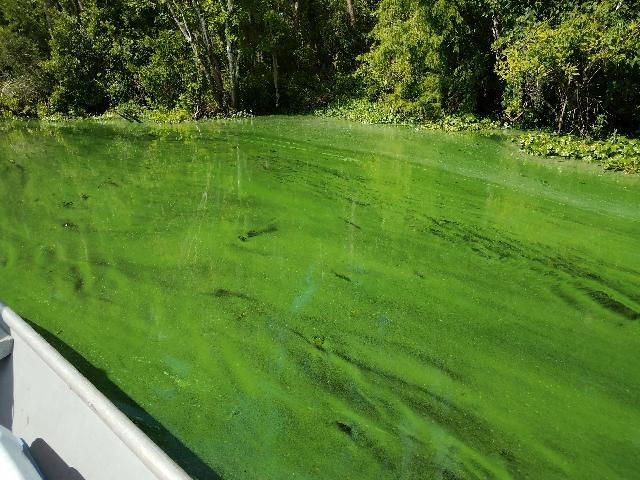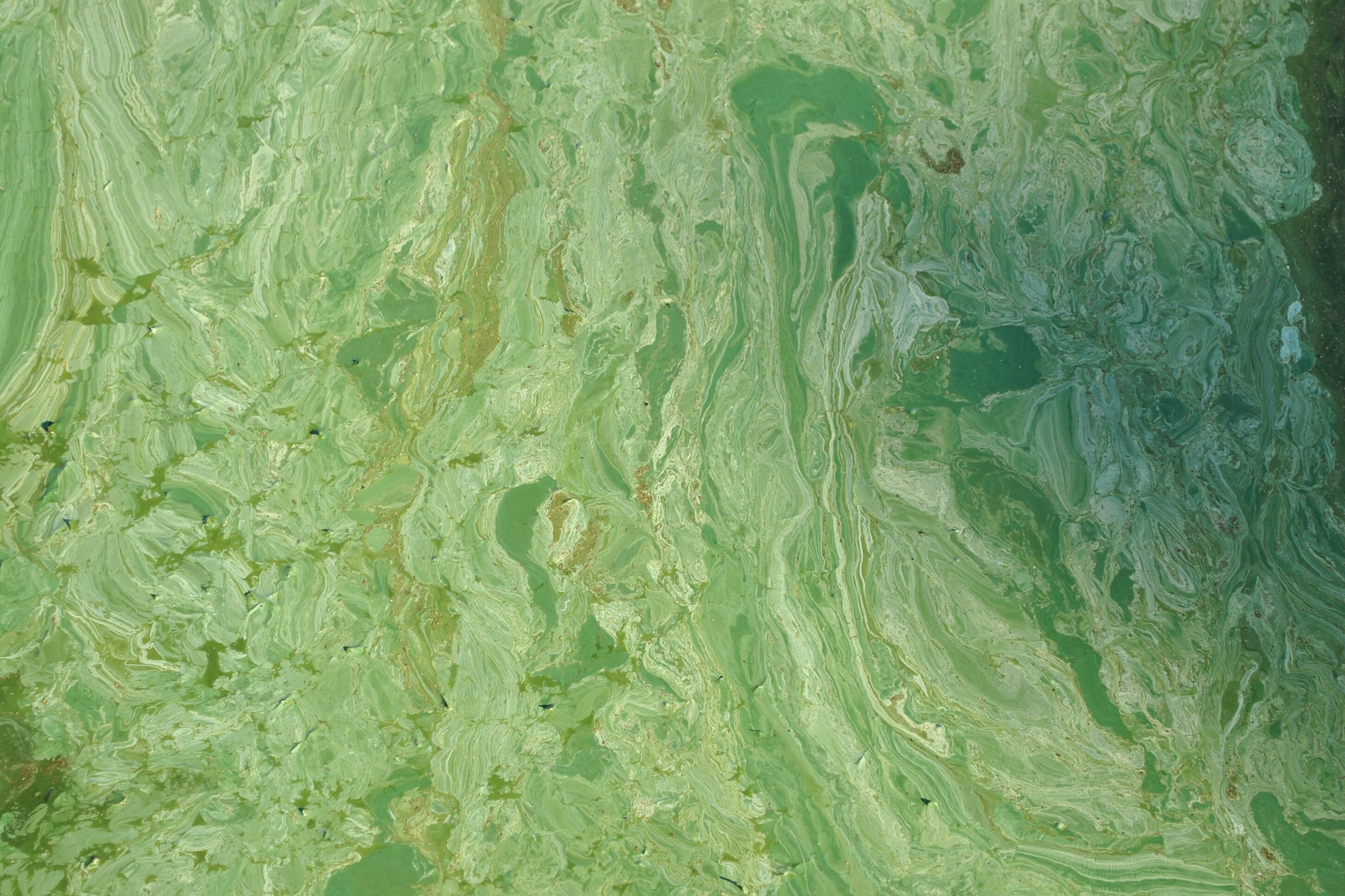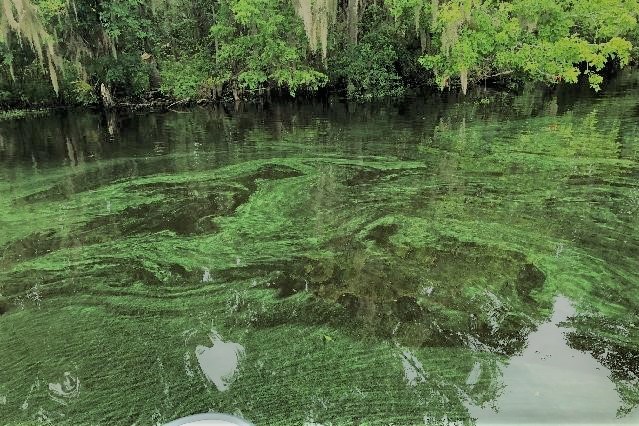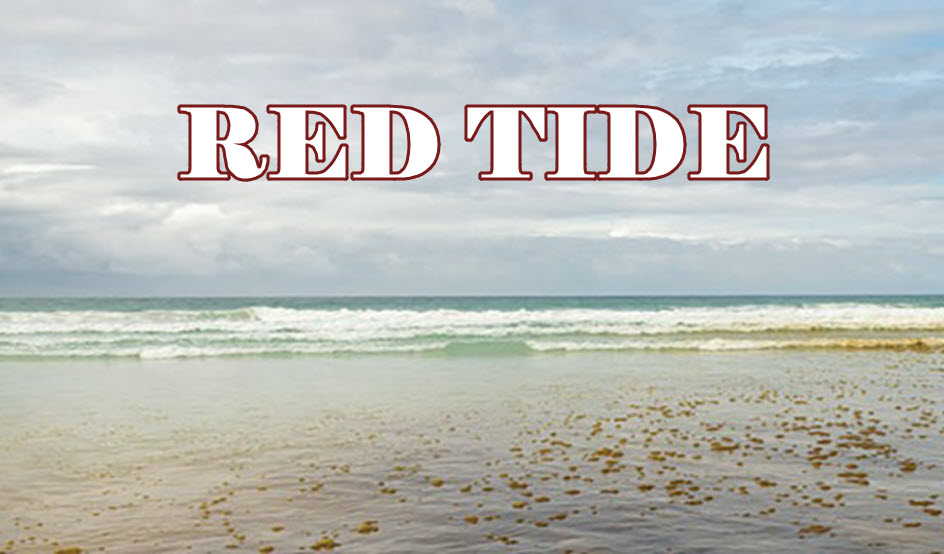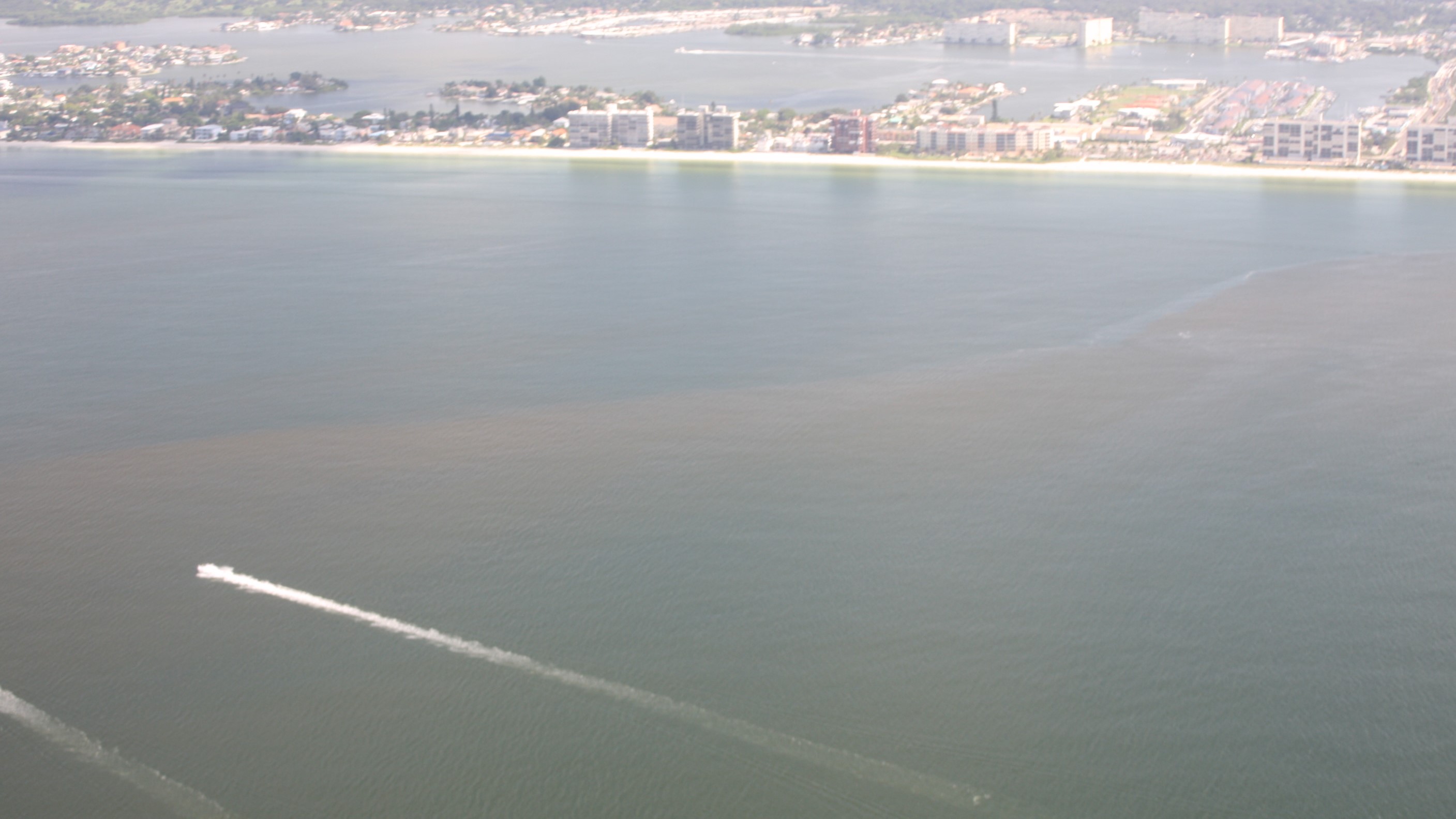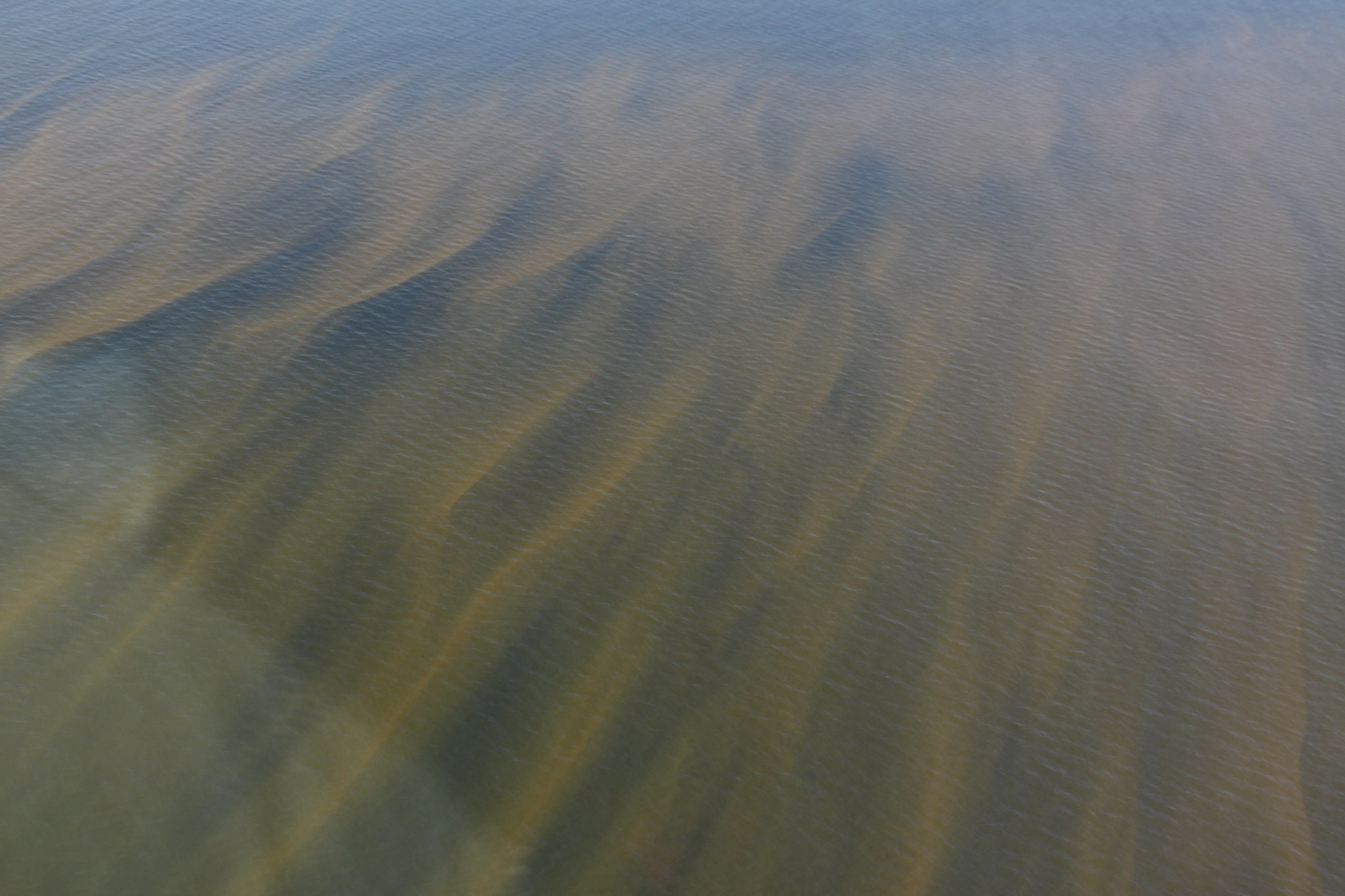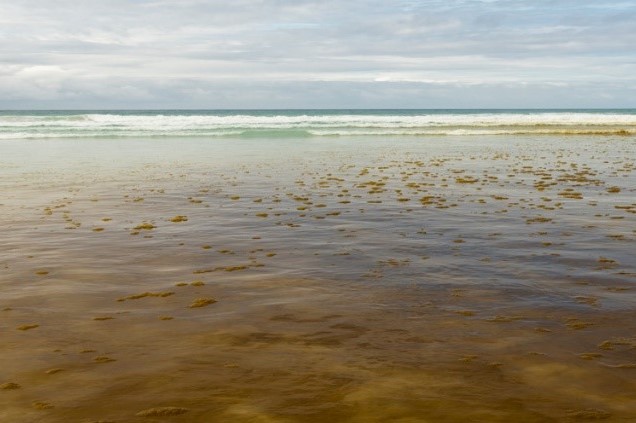Harmful Algal Blooms (HABs)
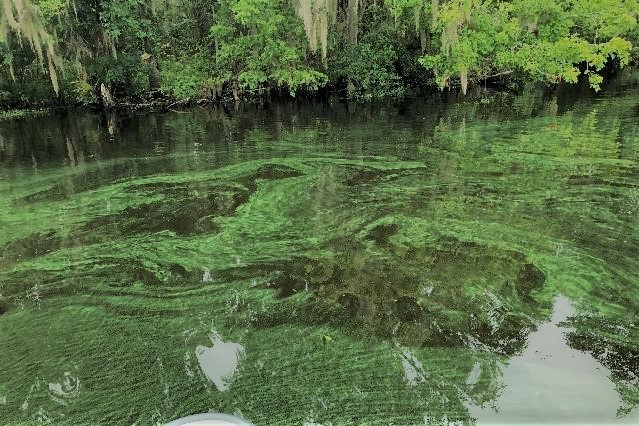
Algae are plant-like organisms that help sustain aquatic life by contributing to the food chain and providing oxygen to keep Florida’s waterbodies healthy. Certain conditions, such as warm weather and increased nutrients, may cause the rapid growth of algae. This rapid growth can cause an algal bloom (or algae bloom).
An algal bloom may look like foamy mat or a scum layer on the surface of the water. Some blooms release toxins that are harmful to people and the environment. A harmful algal bloom (HAB) may occur in a saltwater, freshwater or brackish waterbody.
The most common HABs in Florida are due to blue-green algae (cyanobacteria) in fresh waters and Red Tide (Karenia brevis) in coastal waters.
On Jan. 10, 2019, Governor DeSantis issued an executive order (EO), addressing HABs. The EO included multiple directives to improve water quality throughout Florida.
Another historic step was taken on June 30, 2020, with the governor's signing of Senate Bill 712. This bill carries a wide range of water quality protection provisions aimed at minimizing the impact of known sources of nutrient pollution, realigning the state’s resources to enhance the protection of Florida’s environment and strengthening regulatory requirements.
Learn More about State Action
State Action Timeline Grants Information Restoration Initiatives
What Does an Algal Bloom Look Like?
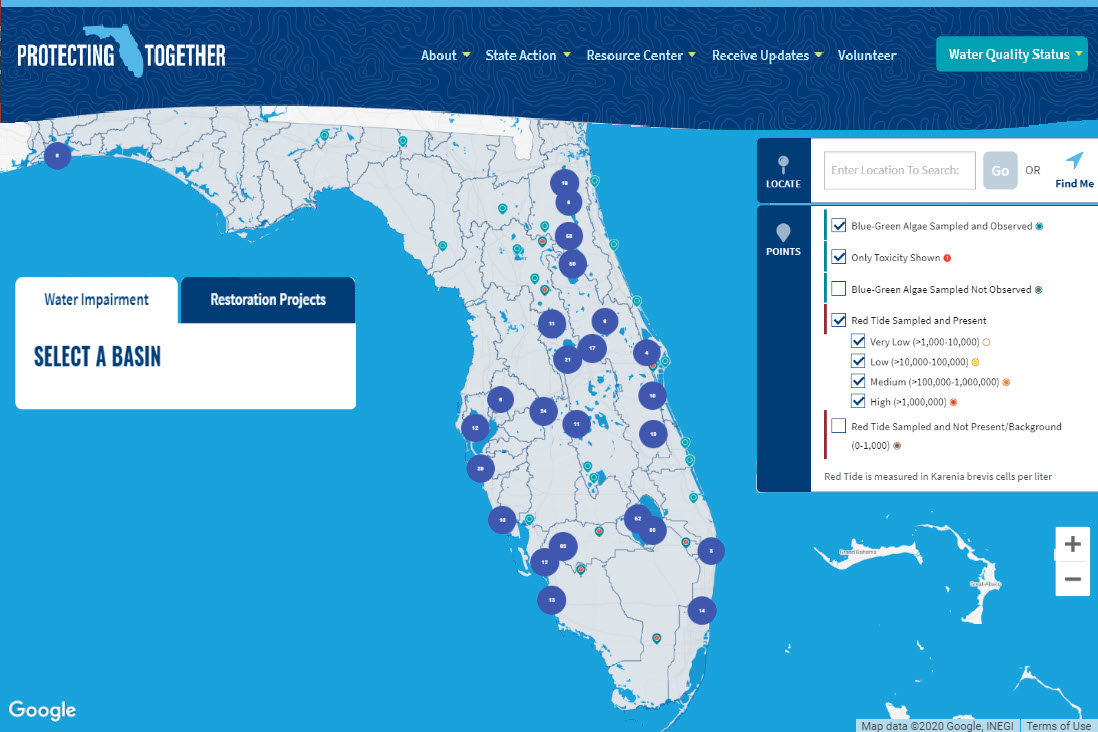
Water Quality Status Dashboard
The Protecting Florida Together Water Quality Dashboard delivers relevant water quality information statewide including blue-green algae, red tide and nutrient monitoring data. This map helps to ensure transparency and accountability with respect to our water quality data and its exchange with the public. Information for this map provided by DEP and FWC.
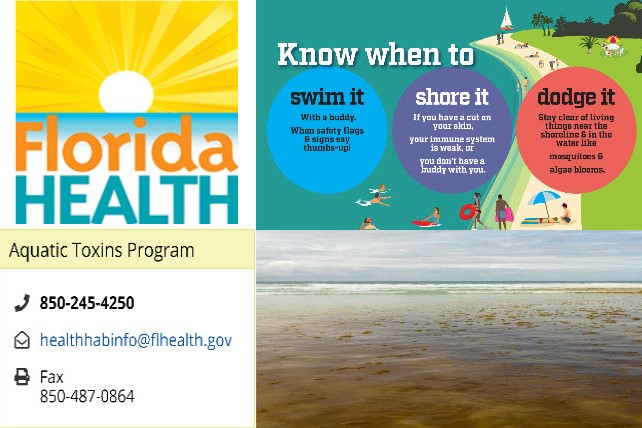
AQUATIC TOXINS PROGRAM
Staff at the Florida Department of Health’s Aquatic Toxins Program work every day to keep Floridians and visitors to our state safe. DOH works in coordination with many partners, including DEP and FWC, to ensure public health is protected.
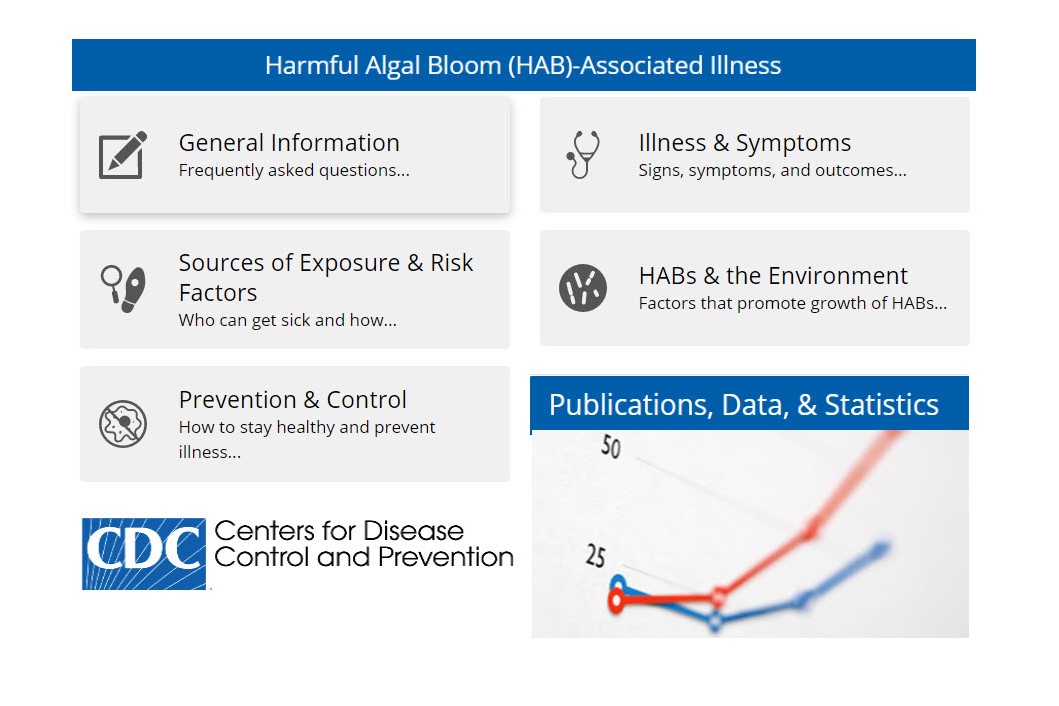
Center for Disease Control
The Centers for Disease Control and Prevention (CDC) serves as the national focus for developing and applying disease prevention and control, environmental health, and health promotion and health education activities designed to improve the health of the people of the United States. The CDC provides additional information on harmful algal bloom related illness, including sources of exposure, risk factors, illness and symptoms.
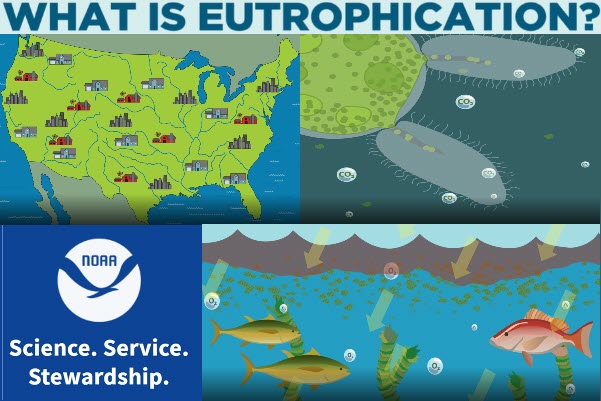
What is Eutrophication?
Learn about eutrophication from the National Oceanic and Atmospheric Administration. Eutrophication is a big word that describes a big problem in the nation's estuaries. Eutrophication occurs when the environment becomes enriched with nutrients, increasing the amount of plant and algae growth to estuaries and coastal waters.
